HOA 3 - Islamic Architecture
1/63
There's no tags or description
Looks like no tags are added yet.
Name | Mastery | Learn | Test | Matching | Spaced |
|---|
No study sessions yet.
64 Terms
Arabia
The beginnings of Islam
610 AD
Muhammad from Mecca saw visons of an angel
Muhammad
the founder of Islam, regarded by Muslims as the last prophet. He preached the revelations he received from the angel Gabriel, forming the basis of the Quran.
622 AD
the year Muhammad and his followers migrated from Mecca to Medina, marking the beginning of the Islamic calendar.
10 yrs
within ______, the framework of religion and military organization tasked to spread the faith
630 AD
Medina fought Mecca and eventually conquered it, leading to the establishment of Islam as a major religious and political force in the region.
632 AD
the year of Muhammad's death, which led to the subsequent leadership disputes and the formation of the caliphate.
1. North into Central Asia
2. Westward to Africa
3. Along the trade routes into India
4. Among the turks & the mongols
Sp
Spread of Islam
military conquest and racial conquest
tribal groups
pu
public life
reserved for men
domestic and agricultural work
reserved for women
Christian and Jews
“poeple of the book”
Muslims translated to Arabic
they translated many scholarly writings from Greek, Persian, Indian
Rulers and scholars
in Islamic society who promoted and preserved knowledge, often supporting the translation and study of various texts. They are interested in mathematics, astronomy, geography, medicine, philosophy and science.
Islam
last 3 of the great religions of the Middle East
Religion
complete philosophy of life and government
One God Allah, Muhammad is the prophet
is the fundamental belief in Islam, emphasizing monotheism and the finality of the prophethood.
Faith
is held to be Allah’s will for creation
Acceptance
Religion is the ____ of the transitory nature of earthly life
Koran
the holy book of Islam, believed to be the word of God as revealed to Muhammad.
Shahada
declaring faith in God
Salah
the practice of ritual prayer in Islam, performed five times a day.
Sawm
the practice of fasting during the month of Ramadan, from dawn until sunset.
Zakat
the practice of giving alms to the poor and needy, typically calculated as a fixed percentage of one's savings.
Hajj
the pilgrimage to Mecca that every Muslim must undertake at least once in their lifetime, if financially and physically able.
Jihad (Holy War)
sometimes added as a pillar to spread their faith and defend from attack
diverse territories
product of the rapid conquest of _____ by a people with no architectural tradition
Synthesis of styles
____ under one philosophy but in many different circumstances
Direct social or community purpose
Important and architectual endeavor is normally expended on builngs having ___
Decorations
geometric, caligraphic, plants motifs, uniform, focal element
Symmetry and Balance
concept of perfect creation in Islamic Arch.
centered upon God
decorations are _________
Kibla
the direction Muslims face during prayer.
Decorations in human and animal forms
generally avoided in Islamic art to maintain focus on the divine and spiritual aspects.
Mosque
principal place of worship; used for Friday prayer
Mosque
could alsoo be used for school, place of transaction, storage for treasures, place for hearing official notices.
Masjid
small prayer house
Madrassah
religious college and mosque
Dikka
reading desk
Maqsura
screen
Mimbar
raised platformfor ceremonial announcements
Iwan
open-fronted porch facing a court
Minaret
tower from which a call to prayer is made
Kibla
axis oriented towards Mecca
Sahn
cloistered or arcaded courtyard is a fundamental feature
Fawwara
fountain
Mihrab
niche oriented towards Mecca
Muezzin
caller who summons the faithful to prayer
Imam
man who leads congregation in prayer
Caliph
successor to the prophet as military, judicial, or spiritual leader of Islam
Sufi
holy man
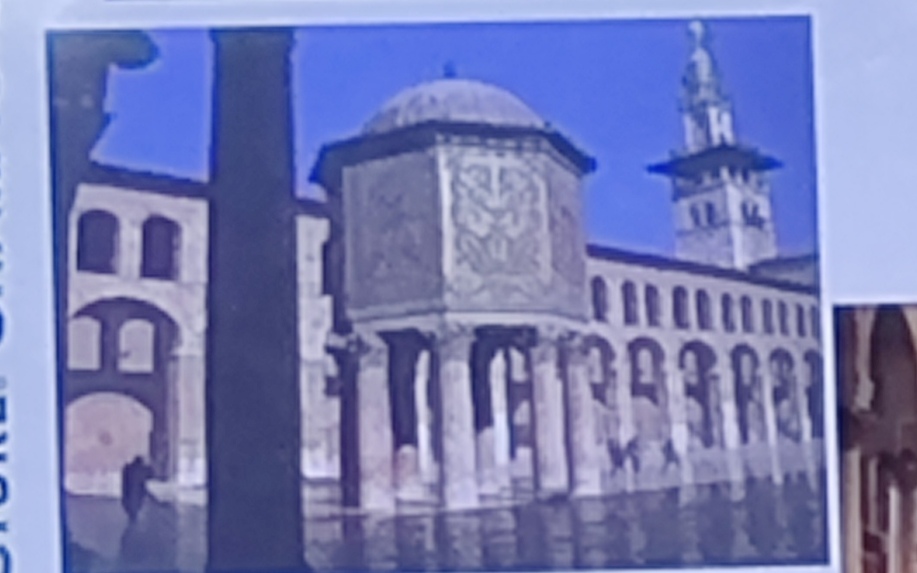
The Great Mosque, Damascus
Earliest surviving large mosque, built in 705-711 AD
Stood in walled temenos
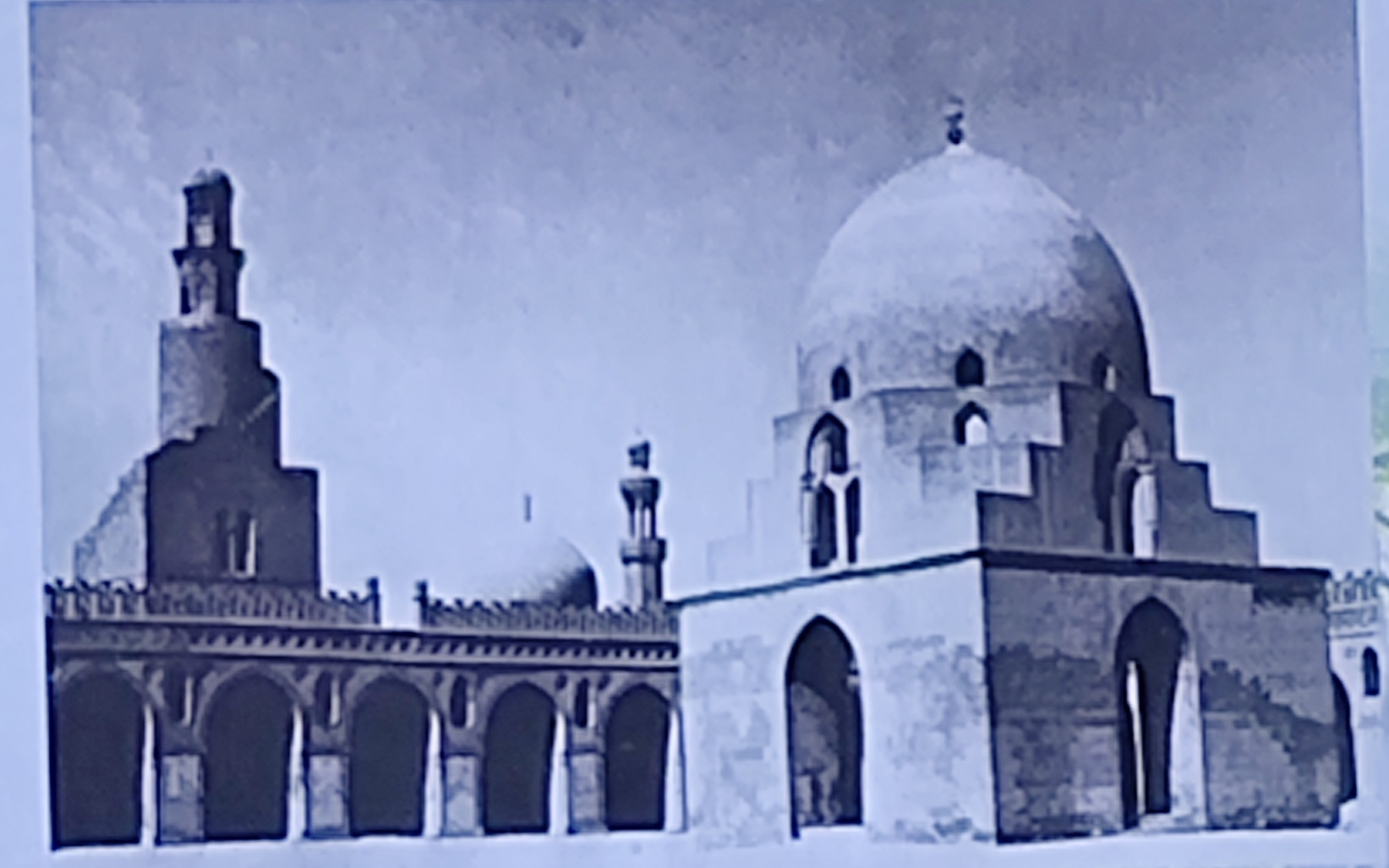
Dar al-Imara and Mosque of Ibn Tulun, Cairo
876-879 AD
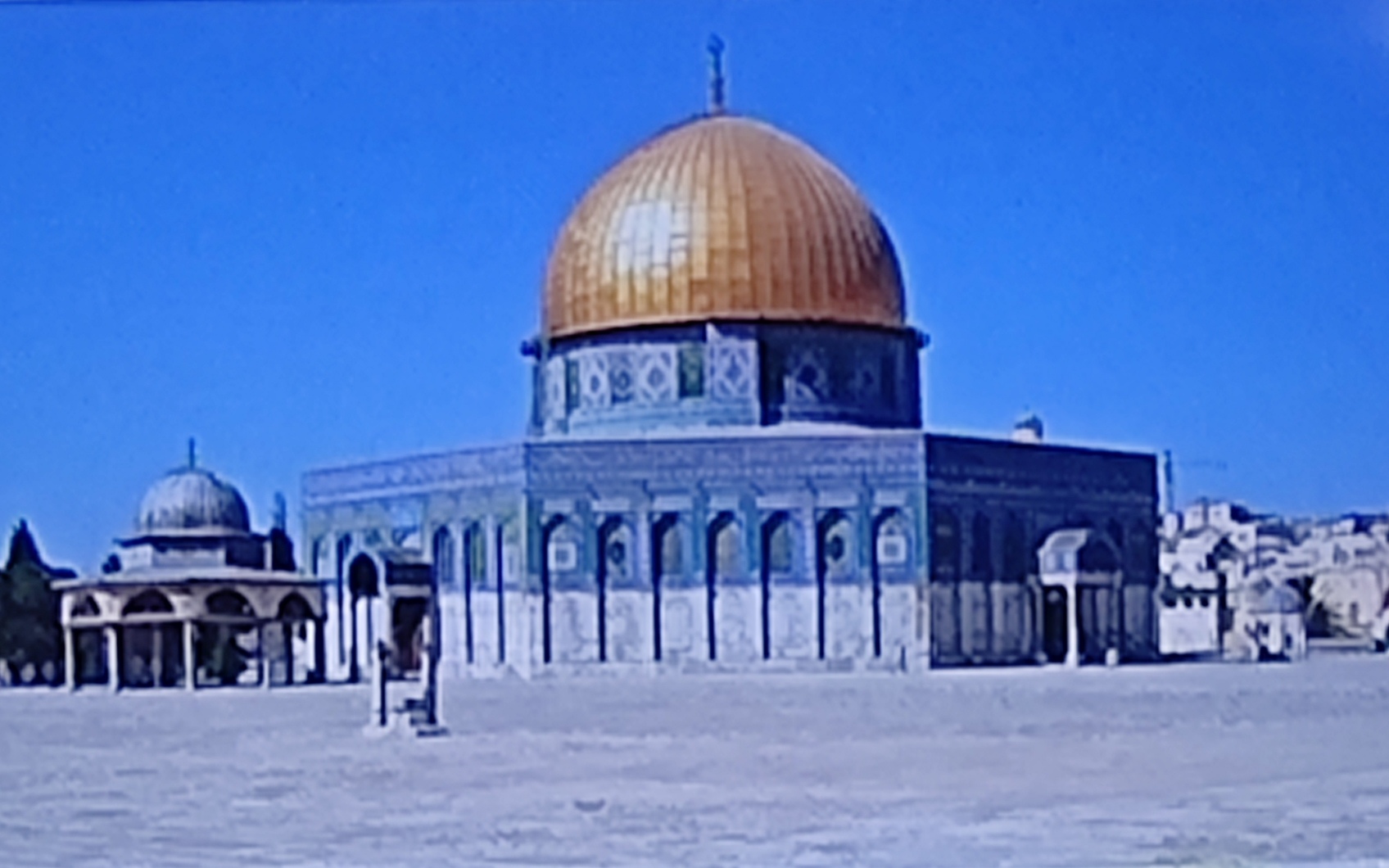
Dome of the Rock, Jerusalem (Kubbet-es-Sakhra)
688-692 AD
Most important Islamic structure
Great central dome covers the summit of Mt. Moriah (from where the prophet is believed to have made his ride to heaven)
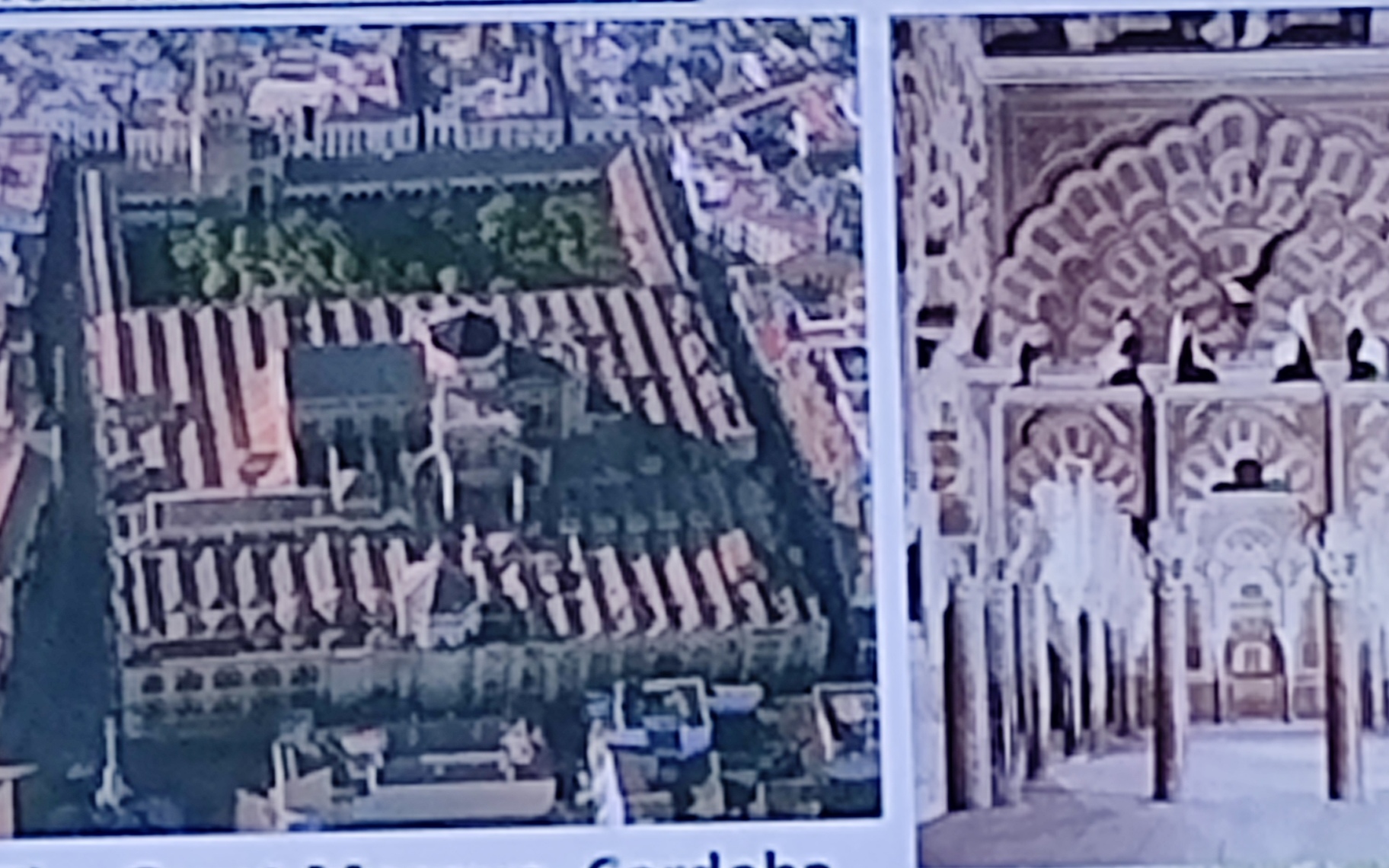
The Great Mosque, Cordoba
Known locally as Mezquita-Catedral. One of the oldest structures still standing from the time Muslims ruled Al-Andalus
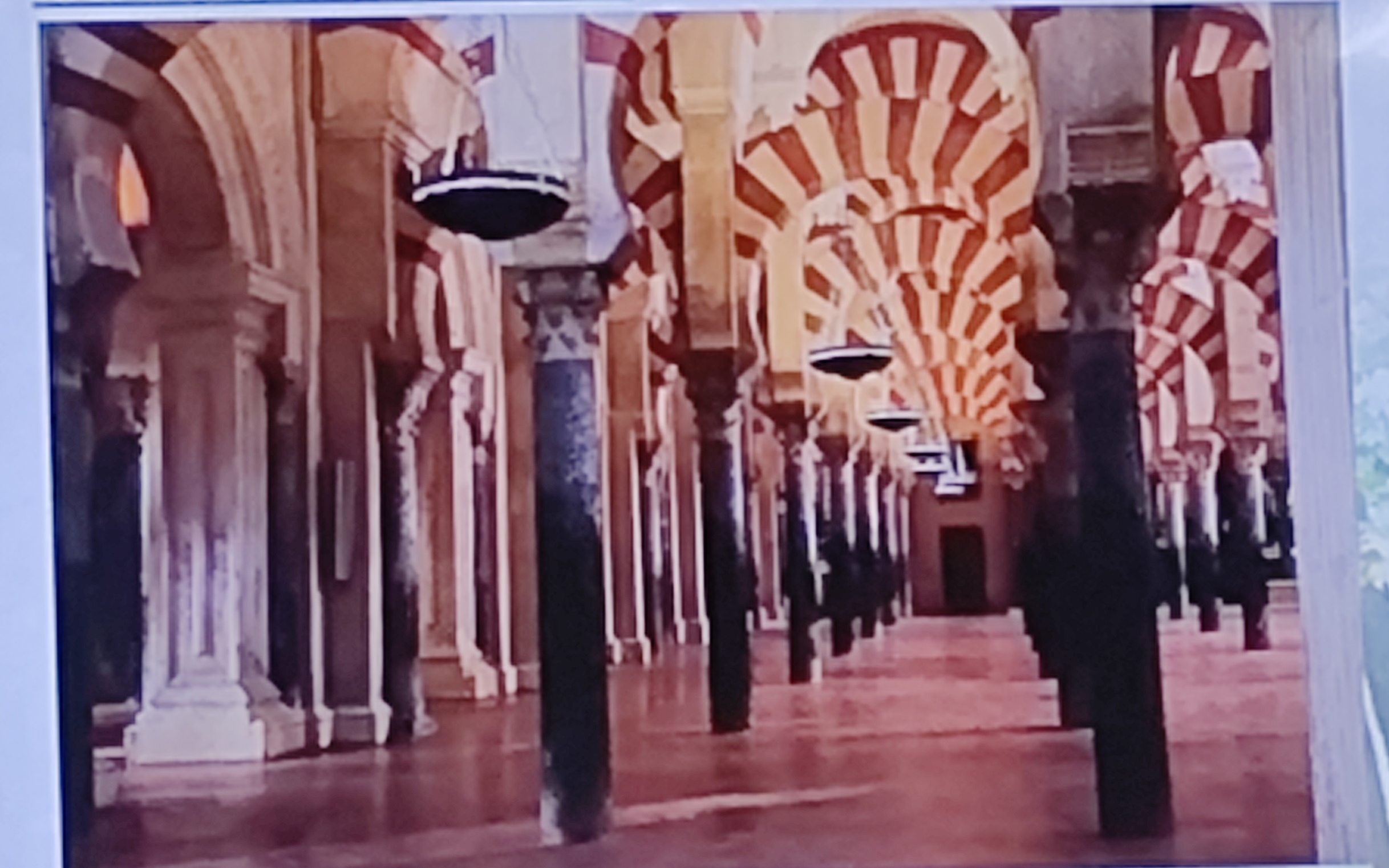
Hypostyle Hall, Great Mosque at Cordoba, Spain
begun 786 and enlarged during the 9th and 10th centuries
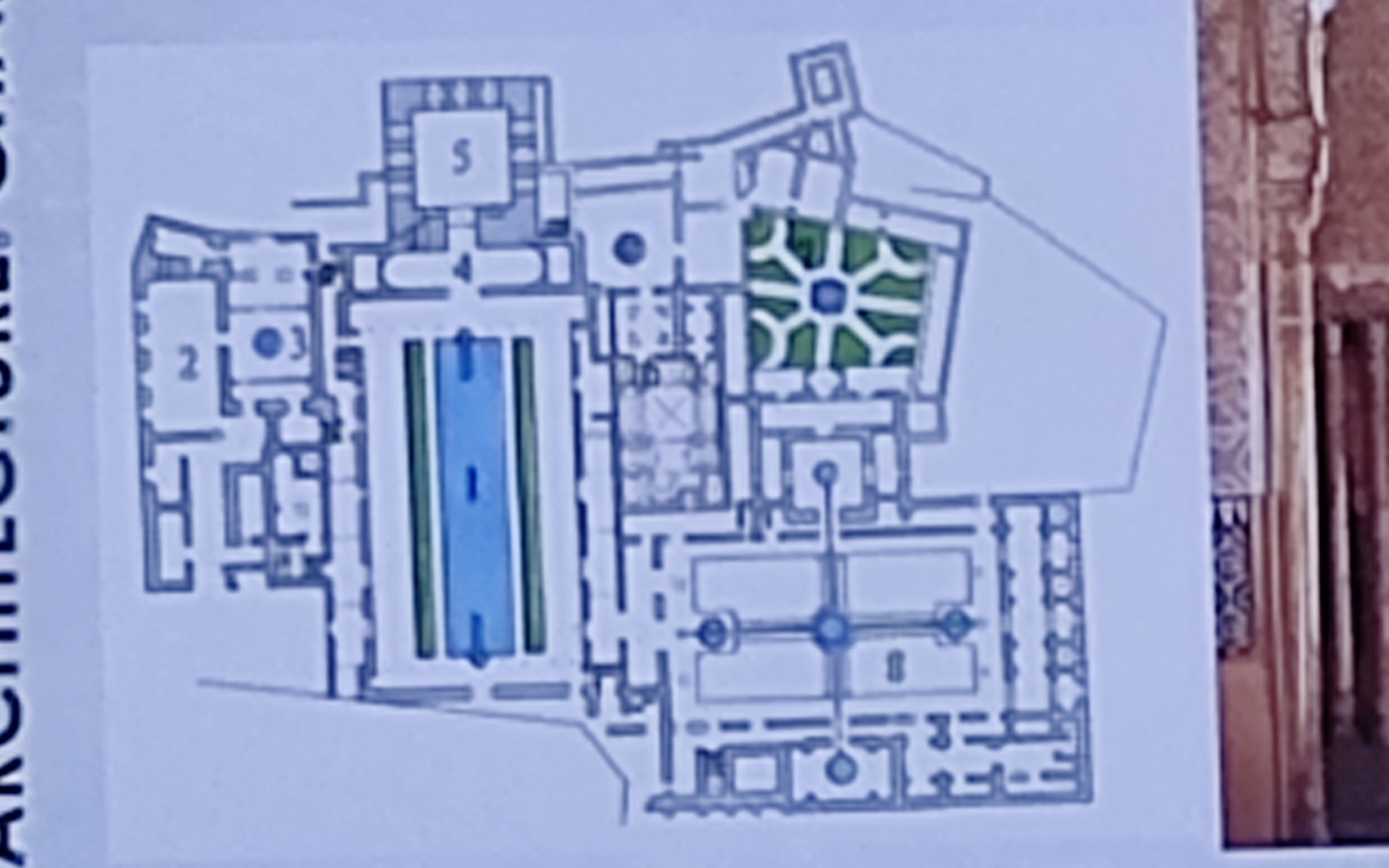
Saray/Serai
palace with courtyard
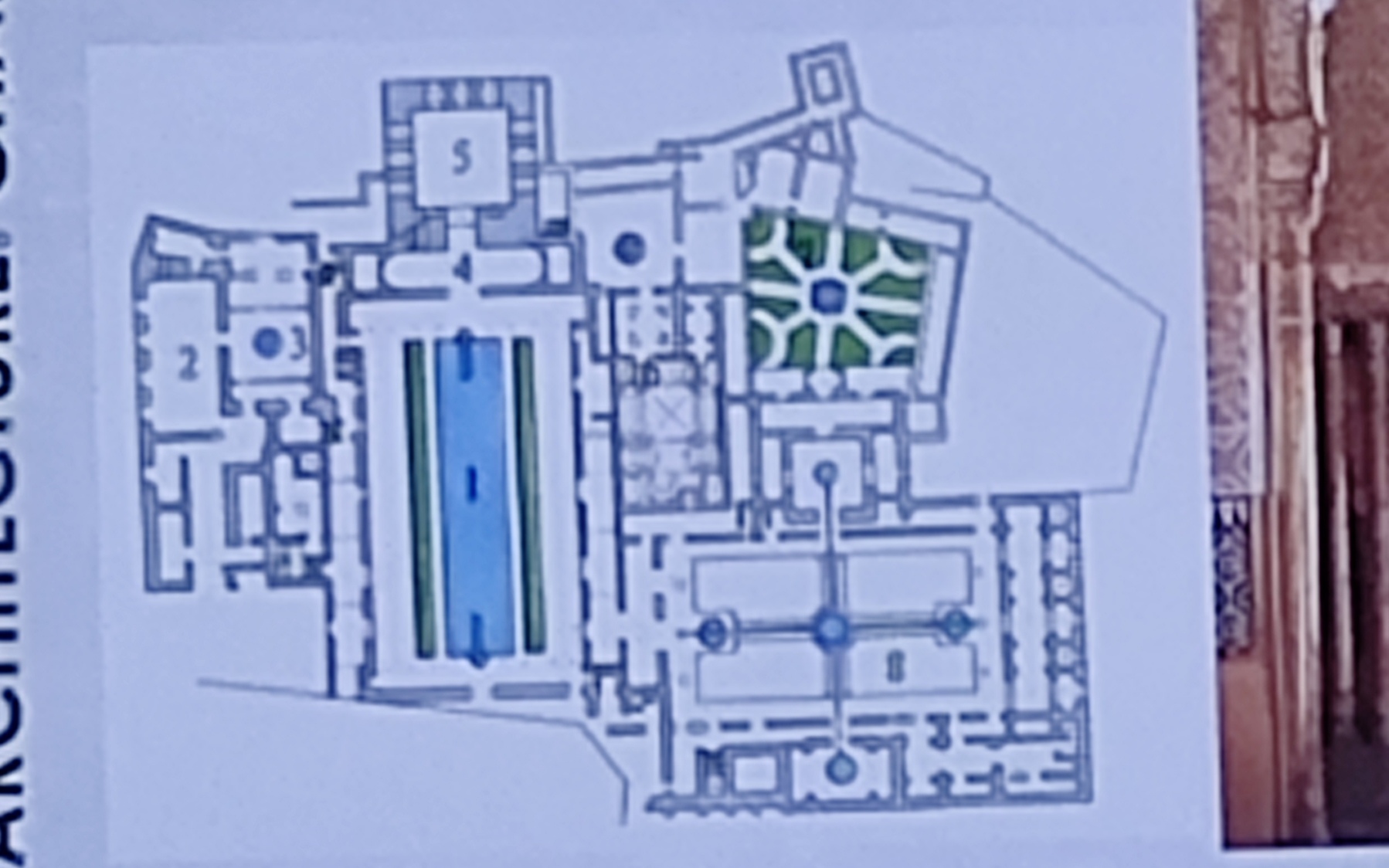
Alhambra, Granada
1338-1390 AD

Taj Mahal, Agra
1630-1653 AD
Built by the emperor Shah Jahan for his favorite wife Mumtaz Mahal
11 years to build and 20,000 worked on it
covered in white marble
sits in a well-landscaped garden
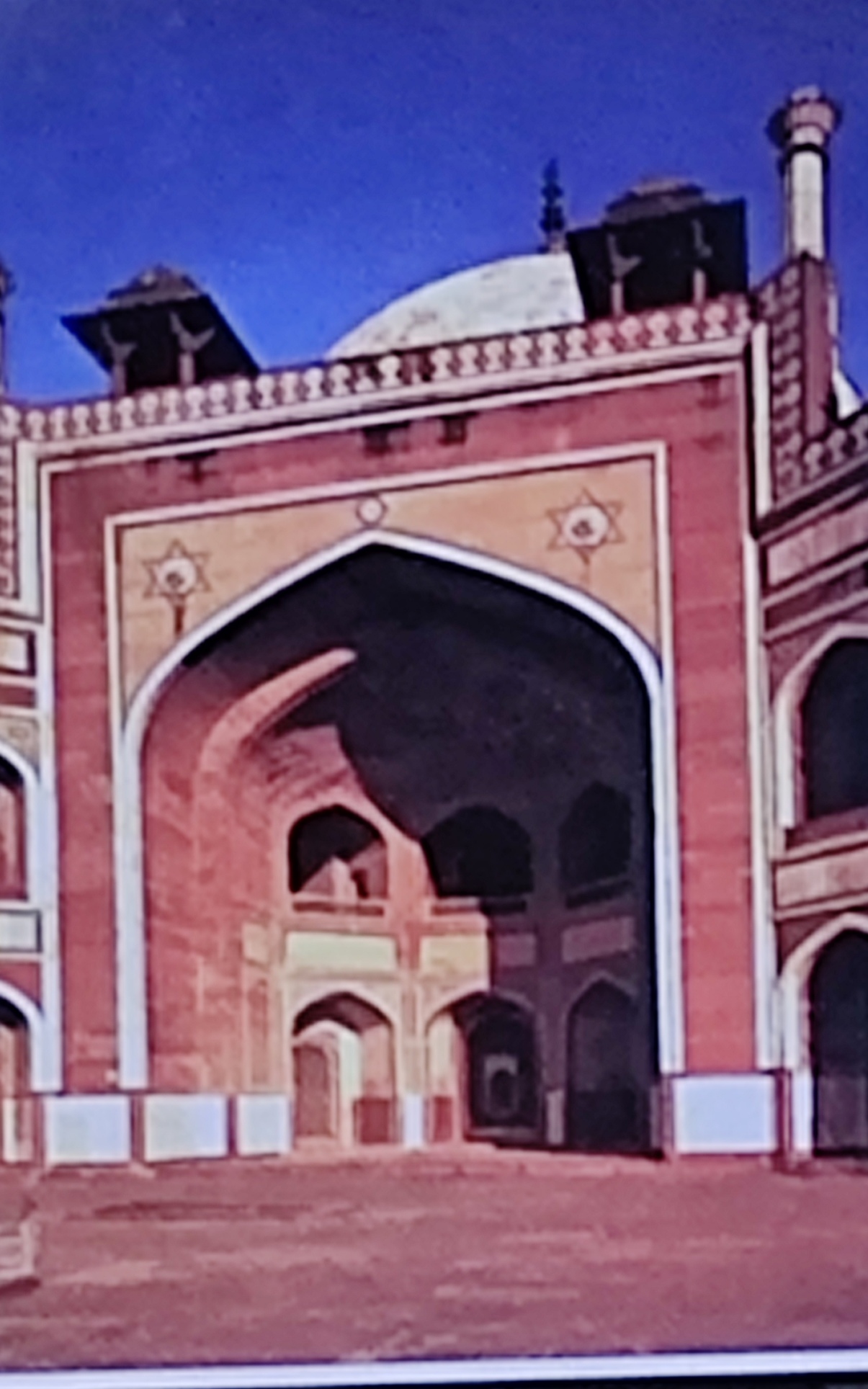
Tomb of Humayun, Delhi
1565 AD
Tomb of the Mghal emperor of Humayon in Delhi
Built by Hamida Bagu Begum
Made of red sand stone
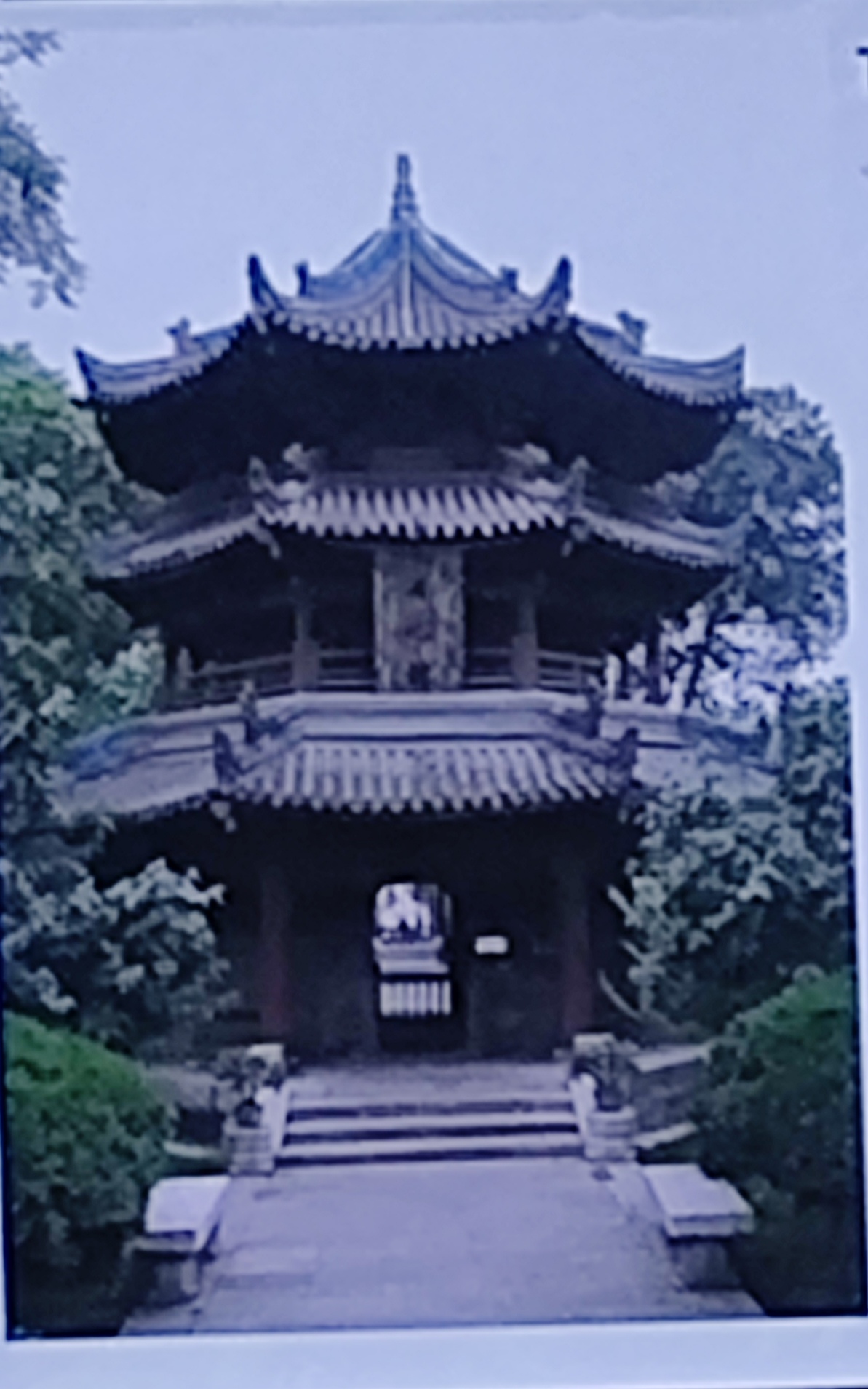
The Great Mosque of Xi’an
the first chinese mosque establised in the 7th century during the Tang Dynasty
Eastern Chinese mosques were more likely to look like pagodas
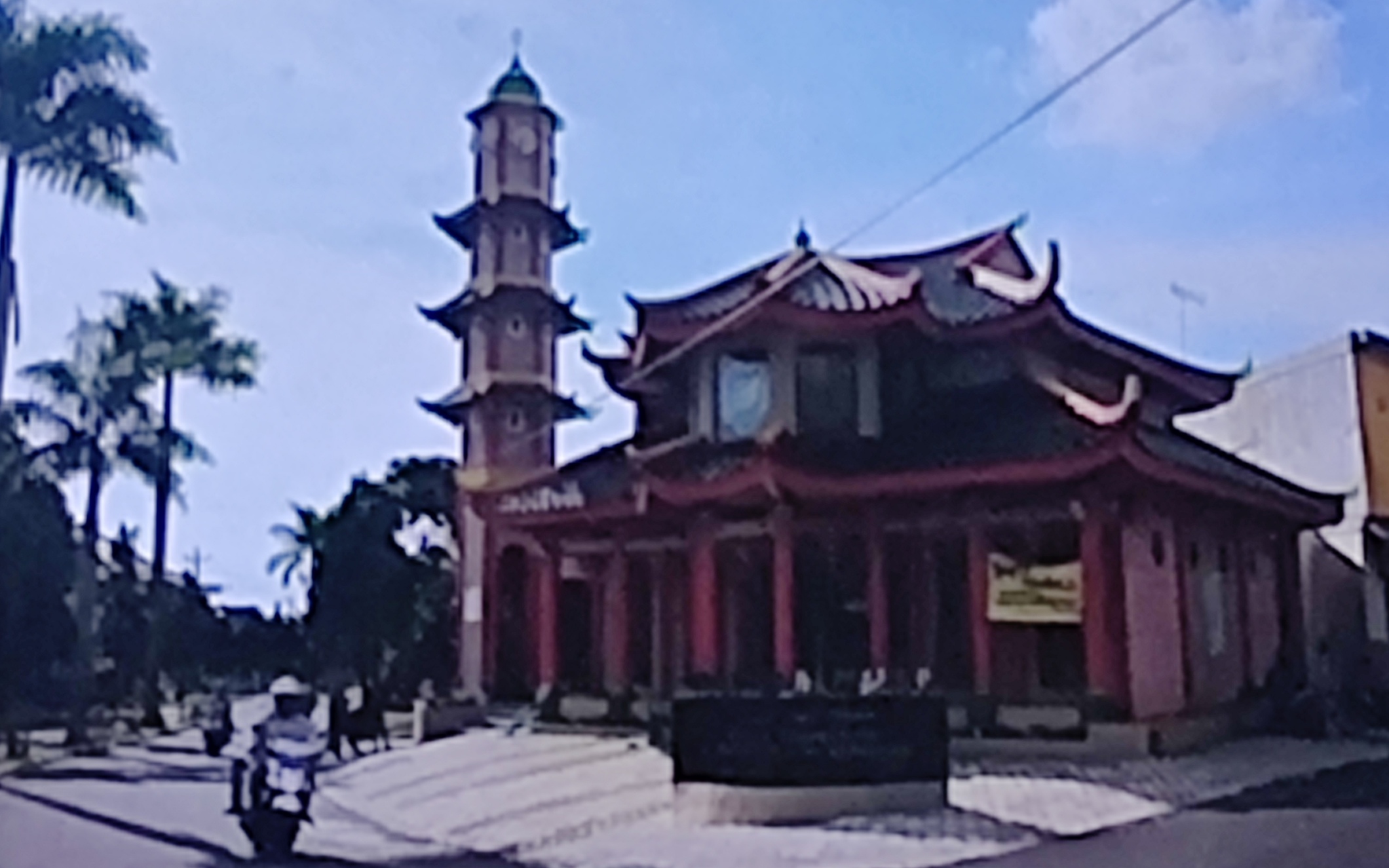
Magelang Mosque
resemblems a chinese temple
built by Kwee Glok Yong, a man of Chinese descent whi changed his name to Mahdi when he converted to Islam
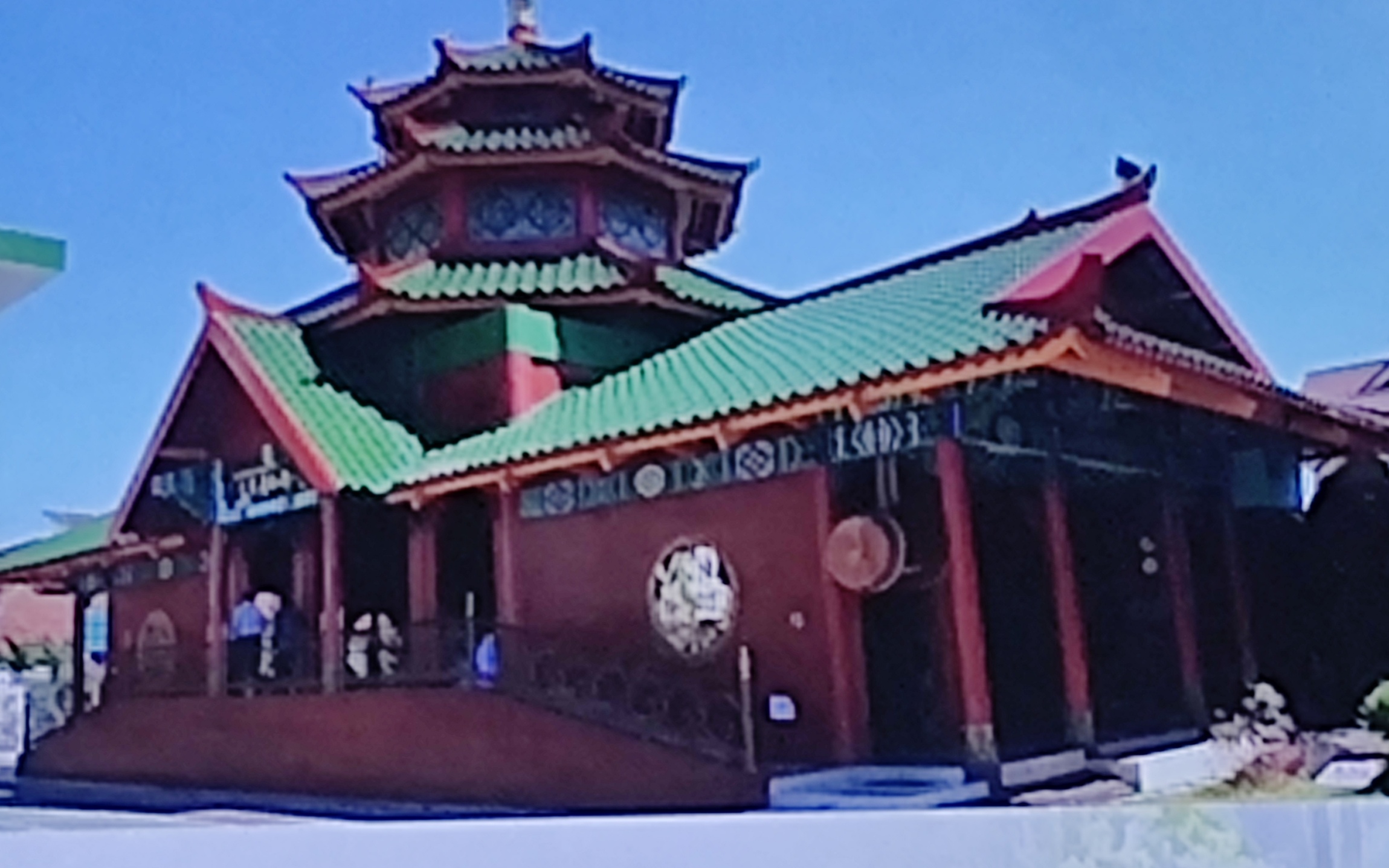
Menara Kudus Mosque (Indonesian-Malaysian)
Minaret is not an original architecture of Indonesian mosque, instead the ____ employs a Hindu temple-like structure for a drum used to call prayer